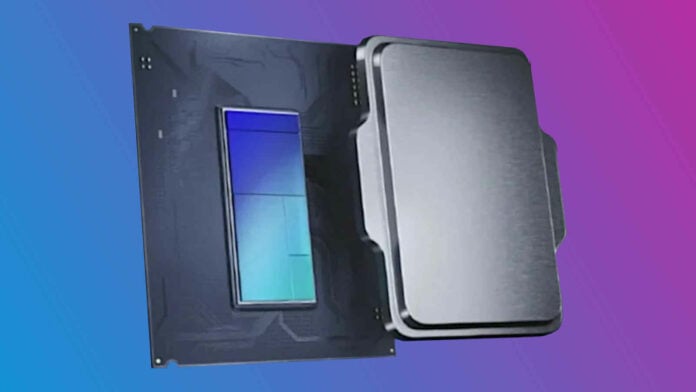It seems that the full spec list of upcoming Intel Arrow Lake-S CPUs was revealed sooner than expected. The new leak shows the frequency, cache amount, and power targets for each model.
According to a table shared by Benchlife, the Core Ultra 200K lineup will be configured as follows:
| Model | Core Ultra 9 285K | Core Ultra 7 265K | Core Ultra 7 265KF | Core Ultra 5 245K | Core Ultra 5 245KF |
| Cores (P + E) | 8 + 16 | 8 + 12 | 8 + 12 | 6 + 8 | 6 + 8 |
| Threads | 24 | 20 | 20 | 14 | 14 |
| Intel Smart Cache (L3) | 36MB | 30MB | 30MB | 24MB | 24MB |
| Total L2 Cache | 40MB | 36MB | 36MB | 26MB | 26MB |
| Intel TVB | Up to 5.7GHz | Up to 5.5GHz | Up to 5.5GHz | Up to 5.2GHz | Up to 5.2GHz |
| Intel TBMT 3.0 | Up to 5.6GHz | Up to 5.5GHz | Up to 5.5GHz | NA | NA |
| P-Cores Max Turbo | Up to 5.6GHz | Up to 5.4GHz | Up to 5.4GHz | Up to 5.2GHz | Up to 5.2GHz |
| E-Cores Max Turbo | Up to 4.6GHz | Up to 4.6GHz | Up to 4.6GHz | Up to 4.6GHz | Up to 4.6GHz |
| P-Cores Base | 3.7GHz | 3.9GHz | 3.9GHz | 4.2GHz | 4.2GHz |
| E-Cores Base | 3.2GHz | 3.3GHz | 3.3GHz | 3.6GHz | 3.6GHz |
| Base Power | 125W | 125W | 125W | 125W | 125W |
| Turbo Power | 250W | 250W | 250W | 159W | 159W |
If correct, this indicates that Intel didn’t chase higher frequencies this generation, probably to avoid a repeat of the issues its 13th and 14th Gen chips faced. This time the maximum frequency is set 300MHz lower at 5.7GHz, compared to the Core i9-14900K 6GHz boost. Not a big deal when factoring in the architectural improvements.
As usual, Team Blue has configured two power targets: 125W base on all models, plus 250W and 159W turbo on the Ultra 7/9 and Ultra 5, respectively. It seems that Intel is still lagging behind AMD when it comes to efficiency, but things may be different in real-world scenarios.
One of the most unusual changes is that these new chips all carry more L2 cache than L3. For reference, i9-14900K houses 32MB of L2 alongside 36MB of L3, but Core Ultra 9 285K seems to reverse this differential. That said, knowing how games like cache, this is great news.
Lastly, as we’ve heard several times by now, Intel has abandoned hyperthreading with Core Ultra 200K. This is due to how the revised architecture handles efficiency. The company tells us that we might not have seen the last of the feature when it comes to future chips, but it simply holds no benefits for Arrow Lake foundations. Nevertheless, the Core Ultra 7 and 5 will remain the go-to chips for gamers as the Ultra 9 only brings more E-cores.
If all goes to plan, expectations point to Intel announcing its new line-up on October 10, with the launch taking place on October 24. Initially, the brand may only release the aforementioned five models alongside their Z890 motherboards, pushing the non-K variants to next year.


